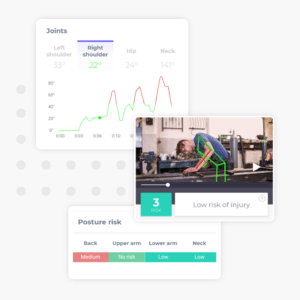In this case study, TuMeke Ergonomics explains how it has helped users understand which jobs present the highest risk of injury and what steps can be taken to mitigate that risk.
 The ability for a safety professional to keep his or her colleagues safe depends on two things:
The ability for a safety professional to keep his or her colleagues safe depends on two things:
- knowing which jobs present the highest risk of injury, and
- What steps must be taken to mitigate that risk.
Safety professionals use a variety of ergonomic assessments that measure the likelihood of developing a work-related musculoskeletal disorder (WMSD) on the job. However, performing these assessments at scale and knowing where to maximize a safety professional’s attention is a time intensive and difficult process.
Overview
At various Oil & Gas sites across Queensland, Australia, Mick Woods – a HSE Specialist – has been using TuMeke to redesign how employees operate within their workstations. Knowing what musculoskeletal injury an employee will develop is a difficult and time intensive task. The trouble is compounded since traditional methods can require safety specialists to disrupt or slow down production when gathering this information. TuMeke solves this problem by programmatically breaking down where an employee is likely to develop an injury and giving directional recommendations on how to avoid the injury without disrupting production.
Scenario
Performing an ergonomic assessment and compiling a report to show management can take over half an hour. On a day-to-day basis, Mick must identify hazardous conditions across many job sites while also packaging this information in such a way as to convince management to make his recommended worksite adjustments.
Resolution
TuMeke was identified as Mick’s solution and has been used to help restructure working conditions across his firm’s facilities. Without having to compute assessments by hand, Mick can now help many times more employees than he was without TuMeke. Especially important for Mick was TuMeke’s ability to explain precisely which of a worker’s limbs needed to be adjusted, and how Mick could best go about improving the job.
TuMeke assisted in eliminating hazardous manual handling tasks by implementing a change in processes or through the introduction of mechanical aids. At one facility, there was a workstation which required employees to awkwardly handle machinery pieces. Although the task itself involved many steps over a long period of time, the stress placed upon the worker’s wrists appeared short and inconsequential.
Mick used TuMeke to find that this job was in fact placing the worker under a significant risk of injury. Using TuMeke’s rapid assessment and report generation technology, Mick was able to quickly compile a convincing case study to the site’s management on how best to restructure the job and reduce any risk of injury.
Benefit
TuMeke’s ability to perform rapid ergonomic assessments and automatic reporting has given Mick the flexibility to spend more of his time creating tailored job site safety solutions. TuMeke’s automatic report generation has helped Mick make quick and well-informed decisions across the many facilities he is responsible for.
Sign up for a free TuMeke Ergonomics 14-day trial here.
Why should you subscribe to the SHP newsletter?
Do you want the very latest health and safety news, product launches, job listings and expert opinions sent straight to your inbox daily?
The SHP newsletter is essential reading – sign up today to get your hands on all this!

 The ability for a safety professional to keep his or her colleagues safe depends on two things:
The ability for a safety professional to keep his or her colleagues safe depends on two things: